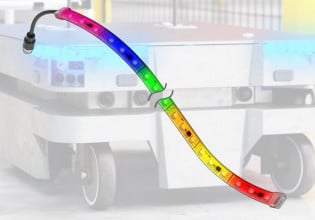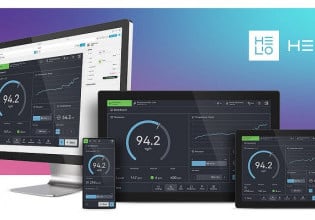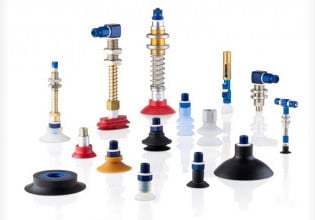Banner Engineering is Bringing Analog Signal and Serial Automation Products to Market
Industry 4.0 continues to push technological advancements in automation. However, many companies still use legacy components, so Banner released products to help analog and serial devices.
Banner Engineering is a global provider of sensors, vision systems, machine safety components, indicators, and LED lighting. The company provides solutions to the manufacturing automation industries. Recently, Banner has added an IO-Link light array, a wireless serial data extender, and inline converters, adapters, and filters to their product line.
Inline Converters, Adapters, and Filters
An industrial converter takes one signal and converts it to another. The S15C allows machine builders and integrators faced with an analog or resistance temperature detector (RTD) or even discrete signals in the field and convert them to a smart ethernet-based protocol like IO-Link or Modbus.

Banner’s S15C and R45C converters. Image used courtesy of Banner Engineering
Typically, an analog or RTD signal needs a conditioner or amplifier and an analog input card in the programmable logic controller (PLC). Analog inputs are expensive, and the signals are susceptible to electromagnetic field (EMF) noise. Plugging the analog device directly into a converter available on an industrial network reduces cost and potential wiring issues.
Banner Engineering has a product line called PICK-IQ, which allows non-contact indication of items picked from bins. With the R45C, discrete devices can be used in the PICK-IQ network. This facilitates using legacy components where required or customer-defined components while still using previously developed PLC code for the PICK-IQ system.
Just like we have water filters to take out contaminants from our drinking water, there are electrical filters that filter out electrical noise between a sensor and signal conditioner or controller. The S15F in-line filter is a compact way of reducing electrical noise after a sensor. Using industry-standard connectors on both ends makes installation a snap. The S15F comes in three models: voltage suppressor, low-impedance, and high-impedance.
Serial Data Over Wireless Radio
Serial communication devices are still in use today in industrial automation. These legacy devices require short cable runs back to the controller and special communication cards in the PLC rack. Using the R70SR serial data radio, a technician can take that legacy product and place it on a wireless network, essentially expanding the RS-232 or RS-485 network.

Configuration instructions for the Serial data radio. Image used courtesy of Banner Engineering [PDF]
The R70SR is a compact device that comes in two convenient frequencies, 900 MHz and 2.4 GHz. It can communicate with RS-232 or RS-485 networks. No software is required; all the settings can be configured via the onboard DIP switches. The R70SR can act as a client, repeater, or server in the serial network. This means multiple R70SRs can hop and extend a serial signal beyond the restrictions of hard-wired serial devices.
EZ-Array With IO-Link
IO-Link is an industrial protocol used for sensors in the field. An IO-Link compatible device is connected to an IO-Link server, and the server device is connected to another industrial protocol such as Ethernet/IP or ProfiNet. Using the IO-Link topology, many devices can be connected under one internet protocol (IP) address. When using an IO-Link compatible device, parameters for the device can be set using a cyclic messaging infrastructure.

The IO-Link enabled light curtain. Image used courtesy of Banner Engineering
The EZ-Array series light curtains are now available with IO-Link. These light curtains can detect edge and center, hole size, and real-time product size. With the EZ-Array series now available on IO-Link, these light curtains can be installed in the field along with other IO-Link compatible devices, share the same IP address, and have all the configurations available in real-time.






